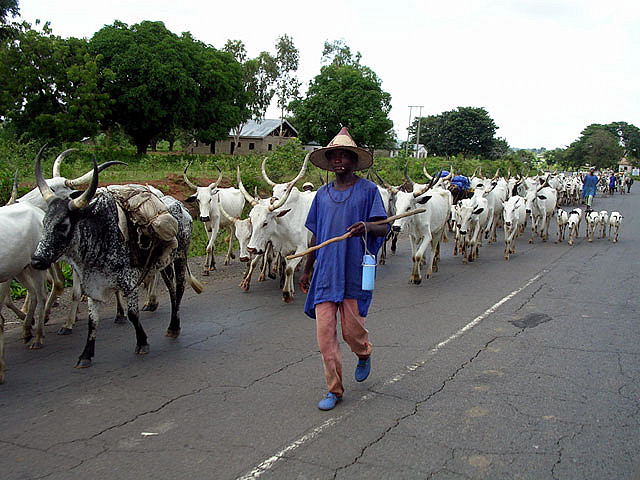Amnesty International says no fewer than 168 persons have died in herdsmen/farmers clashes in five states in Nigeria in 2018.
The Country Director of the organisation, Osai Ojigho said this in a statement made available to the media on Monday.
She identified the affected states as Adamawa, Benue, Taraba, Ondo and Kaduna.
She said, “Clashes between herdsmen and farmers in Adamawa, Benue, Taraba, Ondo and Kaduna have resulted in 168 deaths in January 2018 alone.
“Hundreds of people lost their lives last year, and the government is still not doing enough to protect communities from these violent clashes. Worse, the killers are getting away with murder.”
Ojigho added that 549 persons were killed and thousands more displaced across 14 states in similar clashes between nomadic herdsmen and local farmers last year.
She said, “In 2017, clashes between nomadic herdsmen and local farmers resulted in at least 549 deaths and thousands displaced across Enugu, Benue, Taraba, Zamfara, Kaduna, Plateau, Nasarawa, Niger, Plateau, Cross Rivers, Adamawa, Katsina, Delta and Ekiti states.”
“This wave of bloody communal violence must be addressed, and all herders and farmers responsible for killings and the destruction of property must be brought to justice.
“The Nigerian government must ensure adequate reparations for the victims of this violence, including the families of those killed,” she said. “The government must totally overturn its response to these deadly clashes to avoid this crisis getting out of control. They need to investigate and bring suspects to justice.”
Ojigho said the military have been deployed in 30 states across the nation, taking over routine police duties in most of the states.
She accused the military of “excessive and unlawful use of force” in addressing some of the security challenges in the states where they are deployed, leading to wanton loss of lives and destruction of property.
“The Nigerian military is currently performing security operations in 30 out of Nigeria’s 36 states and the Federal Capital territory, often taking over routine policing duties.
“The frequent deployment of soldiers has resulted in many cases of excessive use of force, unlawful killings and extrajudicial executions throughout the country.
“The government’s reliance on the military for help in handling what should be public order situations has also seriously undermined the role of the Nigerian police,” the statement read.
She cited an instance in December 2017 when the military fired “warning shots” to check a budding communal clash but ended up killing 86 people across eight villages.
“On December 4 last year, Nigeria’s air force sent fighter jets to fire rockets at villages as a “warning” to deter spiralling communal violence, as hundreds of herdsmen attacked at least five villages in Adamawa state in revenge over the massacre of up to 51 members of their community, mostly children, the previous month.
“An Amnesty team visited the villages following the air raids and gathered witness testimony from residents who described being attacked by a fighter jet and a military helicopter as they attempted to flee.
“Satellite and aerial imagery secured and analysed by Amnesty confirm the devastating cumulative effect of the herders and Air Force attacks, with at least eight villages heavily damaged or completely destroyed by fire…
“The Nigerian Air Force’s director of public relations, Air Commodore Olatokunbo Adesanya, was quoted in local media describing the air raids as “warning shots – not shots to kill”. He said they prompted people to flee the area, and that they had had a “positive effect”.
“Two weeks after the incident Adesanya revised the account, adding that the herdsmen had opened fire on the aircraft.
“Adesanya was also quoted as saying that the air force recorded video footage of the operations, which involved an Alpha Jet and an EC 135 helicopter.
“Amnesty is calling on the Nigerian air force – which has received intensive training from the UK and US militaries in recent years – to hand over the footage of the incident and all relevant information to the authorities, including the Attorney-General of the Federation and Minister of Justice for investigation.
The air raids occurred in the villages of Lawaru, Dong, Kodomti, Shafaron and Nzuruwei, where Amnesty interviewed a total of 15 witnesses. Locals in each village also provided Amnesty with lists of the dead, which totalled 86 names.
As the herdsmen shot people and torched homes, and the air raid resulted in fire, it was not possible to establish how much of the death and destruction was a direct result of the air attacks or attributable to the attack by herdsmen.
Based on witness testimony, field observations, determination of the nature of weapons used as well as analysis of photographic and satellite images, Amnesty believes that the air raids caused significant destruction, and estimates that they were responsible for at least 35 deaths and numerous injuries.
Witnesses involved in the identification and burial of the victims said that 51 had gunshot or machete wounds, while the remaining 35 died as a result of the airstrikes in the communities of Dong, Shafaron, Lawaru and Kodomti.
They said that most victims were buried in individual graves but in Dong some 28 victims were buried in a mass grave. Dong and Lawaru had the highest number of fatalities. Across the five villages visited by Amnesty, an estimated 3,000 homes were destroyed.
An Amnesty team documented the impact of the air raid on the ground. In Nzuruwei, the team saw damage on a vehicle and motorbike which were likely caused by rocket fragmentation. Witnesses said they found remnants of the rockets nearby.
Another witness in Kodomti showed Amnesty his home which was destroyed by a rocket, remnants of which were found in the ruins of his house.
Video footage shot by Amnesty shows the widespread destruction of homes reduced to charred rubble, twisted metal and ash in areas where the villagers said the rockets landed. Amnesty’s team also filmed shrapnel gathered by villagers.
Experts identified the munitions as French-made SNEB rockets which are known to be used by Nigeria’s Alpha Jet aircraft. In some villages, the rocket attacks happened at the same time as the herders raids, while in other villages the air force arrived shortly afterwards, witnesses told Amnesty…
“A farmer from Shafaron said a helicopter and a jet launched their air raid just after the herdsmen arrived: “The helicopter and the jet started releasing bombs. Houses started burning. Children started running for their lives. Mothers packed up their children and escaped with them. We men were unable to fight back and we started running too. This jet burnt our houses and properties to ashes.”
“A traditional ruler of one of the villages, whose house was destroyed in the air raid, also described how the aircraft arrived shortly after the herdsmen. He said: “As we were trying to hide we saw a helicopter and a jet arrive and start shooting and bombing houses. When they saw somebody trying to hide, the jet would just blast them with bombs.”




 Premier League
Premier League